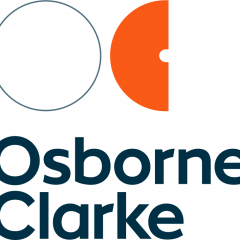Who: Procter & Gamble (Health & Beauty Care) Ltd t/a Beauty Recommended and the ASA
Where: England and Wales
When: 27 May 2015
Law stated as at: 11 June 2015
What happened:
Procter & Gamble own “Beauty Recommended”, a YouTube channel that hosts a number of make-up, beauty and hair styling videos from various vloggers. Proctor & Gamble also have editorial control over the content of the videos the channel carries.
A complaint was made to the ASA by a beauty and style blogger, in respect of a video titled “Easy Lip Makeup Tutorials for Winter Time” that was posted on the Beauty Recommended channel and featured multiple Max Factor products, as well as some third party products, being used and demonstrated by fashion model and vlogger Ruth Crilly. The complainant challenged whether the video was obviously identifiable as a marketing communication.
The video included the wording “sponsored by Beauty Recommended brought to you by Procter & Gamble” at the start and the end of the video as well as in the “Show More” section underneath the video description. Procter & Gamble believed that a viewer’s engagement with a vlog began when they started to view the vlog, however, the ASA disagreed.
The ASA stated that viewers must be aware that they are viewing marketing content “prior to engagement, meaning that consumers need to know that they [are] selecting an ad to view before they open and watch it” (emphasis added).
The complaint was upheld by the ASA who noted also that the channel page, channel title and individual video titles did not include any text that conveyed the commercial nature of the content.
Further to this the ASA found that “sponsored by” and “brought to you by” did not sufficiently convey Proctor & Gamble’s involvement or that the vlogs were marketing communications. In the ASA’s view, they did not clearly indicate, for example, that as well as providing a platform for and financing the vlog, Procter & Gamble had editorial control.
Accordingly the vlog breached CAP Code 2.1, 2.3 (recognition of marketing communications) and 3.1, 3.3 and 3.5 (misleading advertising).
Why this matters:
YouTube vlogs are already widely adopted by advertisers as an ideal format for reaching specific target audiences en masse. However, the format is still relatively new and regulatory guidance is delivered in piecemeal chunks, usually in the form of ASA decisions. As such, this is a useful decision for providing further clarity in this area.
Advertisers have relied on the ‘sponsored by‘ and ‘brought to you by‘ disclaimers for some time, so this decision will likely affect how most advertisers should now approach identifying their marketing communications to the public in this type of scenario.
In this context, YouTube’s format also creates a unique problem for advertisers, as a large number of videos are accessed by viewers from YouTube’s sidebar; when a video is displayed in the sidebar, all that can be seen is the video’s title and a thumbnail from the video. It can, therefore, be assumed that, in order to follow the advice given in this ASA decision, the thumbnail or title must make it clear that the video is a marketing communication.
Interestingly, if you now access the Beauty Recommended channel on YouTube, all of the videos have had their titles changed to start with the “#ad” prefix. It will be interesting to see if other advertisers follow suit.








